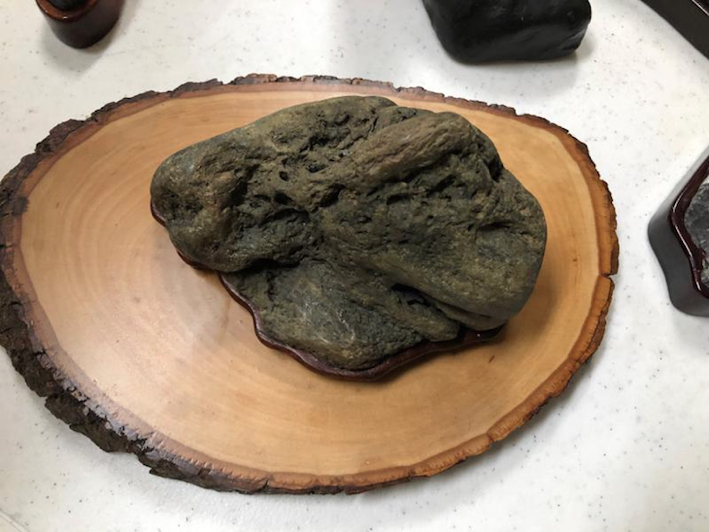March 2020 Program Information
March 2020 Program
Leo Cloutier, our charter member of the club, presented a unique program referencing the book The Japanese Art of Stone Appreciation: Suiseki and its Use with Bonsai [Vincent T. Covello & Yuji Yoshimura, Tuttle Publishing; First American Edition December 15, 1989).
Leo got interested in this study in 1985 after a trip to a mineral show in DC. He is now a member of The Potomac Viewing Stone Group. See here for a brochure of their club and some of their displays.
This art began in China, and was taken up by the Japanese 2000 years ago. It is an appreciation of natural stones, not minerals, as an art form that incorporates water, sand, plants and design.
Small stones, suiseki, are displayed on sand or in water on oblong, rectangular, or oval shaped trays. These trays may be carved wood (daiza) or baked clay (keto) that are hand-made to fit the stone. Suiban are watertight trays that are usually very shallow and oval-shaped.
Leo makes his own trays & displayed several of them ( see https://www.youtube.com/watch?v=C14usr_Oo1g for a high-end approach on accomplishing this). He used cornstarch instead of sand in one and displayed a feather as his sweeper to smooth the material beneath the stone.

One of the club’s favorite displays was a 6” chrysanthemum stone. (see https://www.mindat.org/min-8275.html )

Viewing stones may be tall (8” to several feet high). These are totally natural and may be indoor or outdoor displays.
Leo uses natural stones he himself has found. The only polish is that which is done by nature.
In some Japanese homes, a “display alcove” is designed. The alcove may be 6’ by 2’ with only one stone displayed at a time on a base that may be a few inches above the floor.
Bonsai plants or wall hangings may be included. Additional stones are placed in special storage boxes until they are displayed.
The following web site is dedicated to all things suiseki, and you can find in-depth information about all aspects of this art form there: http://suiseki.com/index.html
We’d like to thank Leo for this cultural trip across the world and for giving us another way to display our finds!


